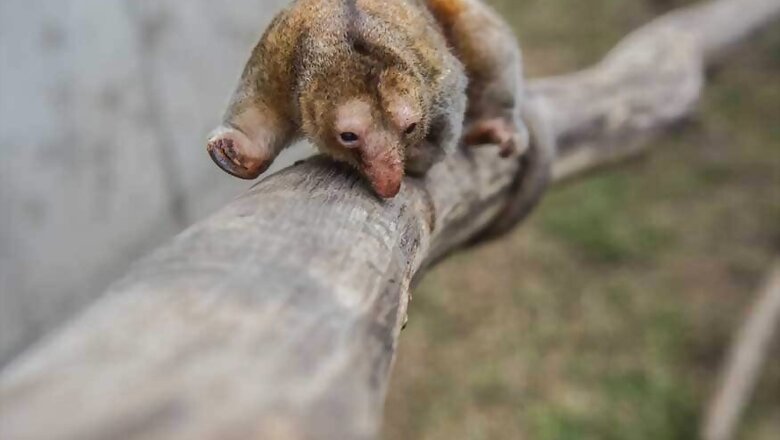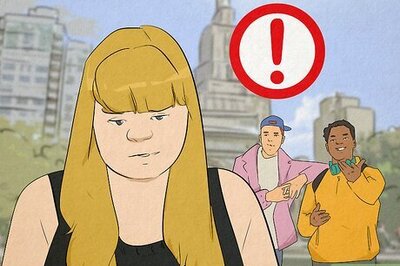
views
Paulina struggles to open her eyes, sees strange people in her space and raises her tiny claws in warning.
Despite the threat, it's hard not to want to cuddle the pint-sized furball and her mate Freddy, the only pygmy anteaters in the world to be kept in a zoo.
Since being rescued from animal traffickers a decade ago, when they were a year old, the pair have lived in the Huachipa Zoo in Lima, Peru.
Native to Central and South America, pygmy anteaters measure about 20 centimeters (eight inches) long -- the smallest anteaters in the world.
Also called silky anteaters, or Cyclopes didactylus, they are known as creatures of the night, wrapping their little golden-brown bodies around tropical tree branches to feed on ants.
They are much smaller than their cousins, such as the Tamandua anteaters, which can measure up to a meter long, or the giant anteater, which reaches two meters long.
They spend their entire lives in the treetops, never touching the ground.
But the destruction of the Amazon rainforest is leaving them without a home.
Because of their fragility, Paulina and Freddy are not on public display.
They are kept in a special enclosure designed to mimic their arboreal habitat.
The pair are believed to be the longest-lived pygmy anteaters in captivity.
Sometimes captured to be kept as pets, the animals typically stay alive only a short time outside their native habitat.
"There's not much information about them because they're not very visible. They are being affected by deforestation, and because of that we are losing them," said the biologist who cares for
the Lima pair, Gina Ccarhuas.
Encroaching threat
It is difficult to estimate how many pygmy anteaters there are in the Amazon because they are so solitary and shy.
"They are vulnerable," said Ccarhuas.
"A conservation program is being launched, and a zoological training course on managing the species."
The International Union for Conservation of Nature (IUCN) does not classify the species as threatened, but warned in a 2014 report that parts of its habitat were disappearing in Brazil.
"There is no doubt that rapid and ongoing deforestation of the Atlantic Forest is negatively affecting the northeastern population of Cyclopes didactylus," it said.
"The species cannot survive in the sugar cane plantations that are replacing the native vegetation in this area and the remaining patches of suitable habitat are increasingly fragmented."
Feeding Paulina and Freddy is a challenge for the zoo, which has had to substitute the ants they eat in the wild with a special protein-rich, probiotic milk formula.
They usually wake up around 6 pm and are active until about 4 am, Ccarhuas said.
They live in an enclosure designed to simulate the canopy of a tropical rainforest.
When daytime comes, they curl up to sleep in a small wicker basket -- VIP treatment for two star guests.



















Comments
0 comment